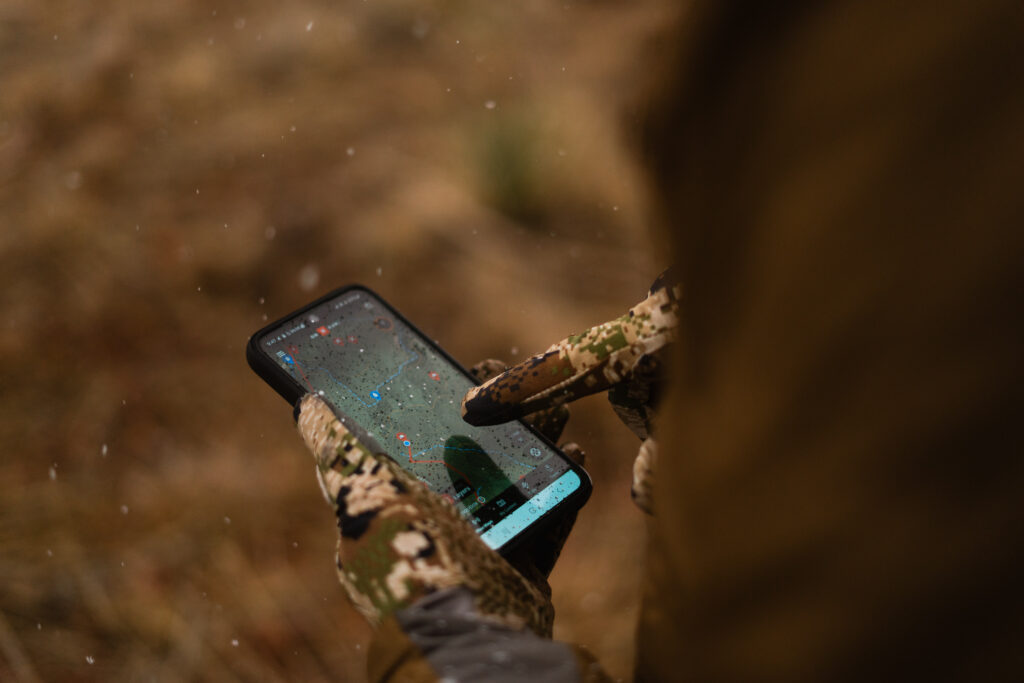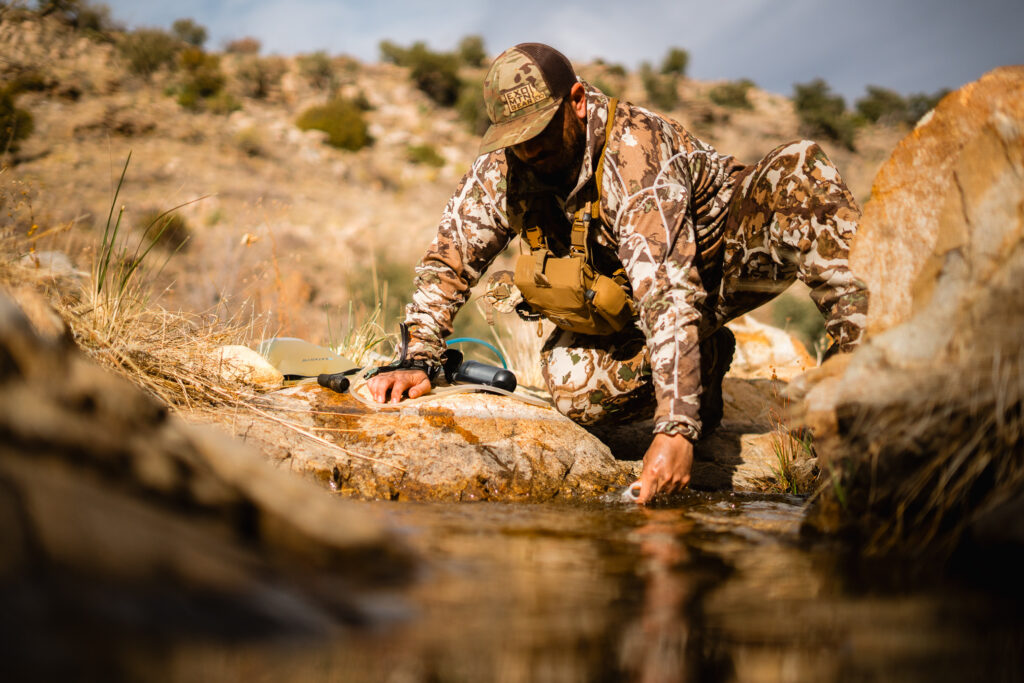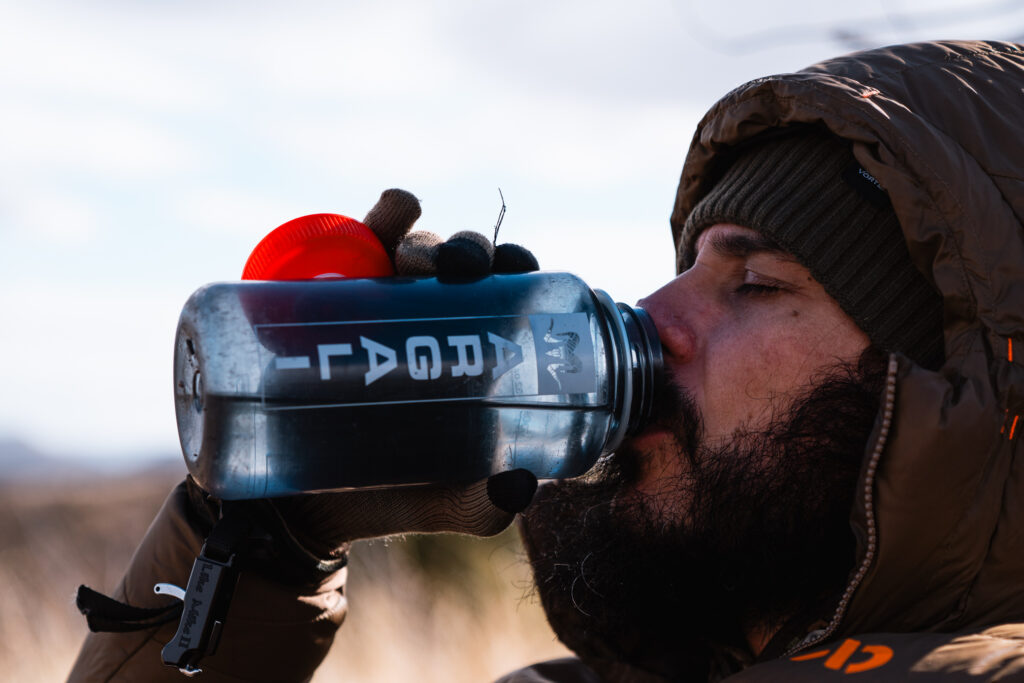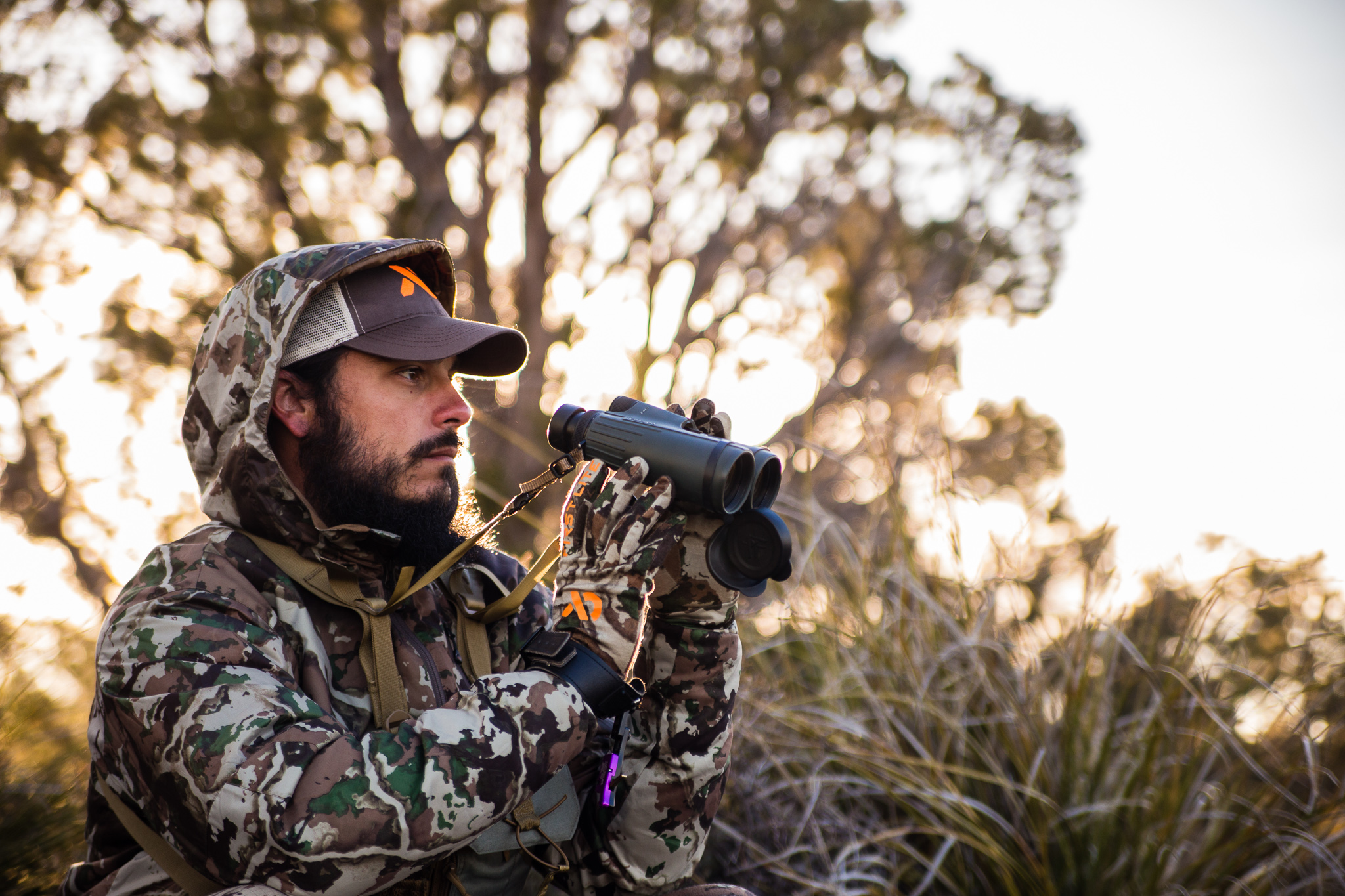
Water is life. For a backpack hunter, there are few things as exciting as finding a reliable water source from which you can nourish yourself off the beaten path. Without water, we simply cannot survive out there. This poses a problem for those of us who live/hunt in dry climates. What do you do when backpack hunting in dry conditions? How do you do it?

As a resident of Arizona for the past 20+ years and an avid backpack hunter for the past 10+ years, these are questions I am all too familiar with. Whether it was me asking them or others asking me for guidance around them. The solution to all of it is simple. Hard work and dedication. If you want to backpack hunt in dry conditions, you can. And I’m going to break down how I’ve successfully done so after many years of sleeping in the dry dirt of Arizona.
We are all familiar with the term “e-scouting.” Whether it’s panning around on our phones or the computer, staring at satellite imagery is a regular occurrence. Most folks are doing this around trying to pre-determine where animals will be or potential camping locations. I do it too. E-scouting is also a valuable tool to find potential water sources.

The two tools I use the most for this are onXmaps and Google Earth. onX will label and highlight all springs, creeks, tanks, etc. So, inside of a given area, I will mark these within the app for future reference. This is super helpful, because a fella can only remember so much.
Along with searching for marked water sources, I’ll also use the satellite view to search for natural pools of water occurring in the bottoms of drainages. These can be seen by zooming in from above. Again, I’ll mark these with pins.
To test the legitimacy of any of these water sources that I can actually see from above, Google Earth has a timeline feature that is incredible. It allows you to go back in time and see satellite imagery from different times of the year. This means that I can scroll that clock back to the driest time of the year. For us, that’s June. If I can see water during the month of June, I can bet that particular water source is pretty darn reliable.

It’s one thing to find a few water sources via a fancy camera in the sky, but I’ve learned through the years that those things can’t be trusted to the fullest. Some situations are better than others, like using the timeline feature, but the fact is, you can’t always see the water from satellite imagery. There is only one thing left to do. Go to it.

Here in Arizona I not only will scout for the animals I’m planning to pursue come season, but also for water. That might sound funny, but we just don’t have the luxury of lively flowing creeks everywhere like many of the other western states have that I’ve spent time in. Because of that, it is absolutely necessary to go and proof these water sources that have been found through e-scouting. It’s something I do literally every single year. Even with water sources I’ve come to know well from past hunts. You just never know out here in the desert. I’ve seen what were very reliable water sources in the past go completely bone dry. If I were to just “call it good” and head in with 8 days worth of gear and a dream, I’d come up empty. Literally.
So, what happens if, through your e-scouting and boots-on-the-ground work, there is no reliable water source for you to use? Maybe there is water nearby, but it might not be practical from a time efficiency standpoint for travel or potentially buggering up the critter situation. Been there done that. Time to load up your backpack.

Many many times in the past I have packed water into areas either on the spot or ahead of time when backpack hunting in dry conditions. If doing it beforehand, we’ve stashed water underneath camo tarps, in bushes, and in heavy-duty canvas-like water bags. Any of the above works just fine.
While it may require a bit more work ahead of time, having water already stashed back there is nice because it eliminates the time it takes to go on water runs. Water is right there waiting for you in camp and ready for your arrival. Before you ask, I’ve never had any issues with critters getting into my water stashes either.
In terms of how much water to bring, this is going to vary from person to person. My average water consumption from drinking is around a liter a day. Of course, there are some days when I might drink more, but that depends on what exactly we’re doing.
Then there is water for cooking. This runs me in the realm of 22-24 oz of water a day.
So, at the minimum, I am planning for 3L of water a day. 4-5L is more preferable though. On a recent coues deer hunt, I hiked in 17L of water and was totally fine for 6 days. Even had leftovers to dump out. This goes without saying, but be sure to pack out any water jugs you bring in.
Water is where water is, and isn’t for that matter. Nonetheless, there are a few useful tools that I’ve come across specifically for backpack hunting in arid environments. They are as follows:
Pump Filter – A pump filter is much more suited for areas that are low on water. The reason is because there are some water sources that are just small. Like a half-dollar small. And having a different system like a Steripen or gravity-fed bag is just not practical. The water source needs to be more prominent for those to work properly.
MSR Dromlite Bags – These MSR Dromlite Bags, are so handy for packing water into the backcountry. I use a 6L bag and stuff it underneath the lid of my backpack. I have a lite version, but there are also more heavy-duty versions available. They just weigh more. I have had zero issues with durability on the lite bags.
Construction-Grade Trash Bag – I usually have a construction-grade black trash bag in my backpack for laying quarters on and deboning meat. However, if it happens to rain out there, laying one of these in a depression in the ground is a great way to naturally catch water. It’s not something that will always come in handy, but like I said, if it rains, this is nifty.

When I first started backpack hunting the whole water thing really freaked me out. This is likely a product of where I live, but it worried me nonetheless. It left me feeling jealous of other states that had such abundant water. Instead of letting that shy me away, I just found a way to make it work. Whether it was through my own experience or the experience of others around me. You can indeed backpack hunt in dry conditions. It just takes a little more planning. Don’t let that aridness drive you away from drinking it all in back there and getting the hunt you’re truly after.
Want to learn more about backpack hunting? Check out my book Becoming a Backpack Hunter: A Beginner’s Guide to Hunting the Backcountry.
As an Amazon Affiliate, I earn some coffee money from qualifying purchases.


Copyright 2019 Dialed In Hunter
Design by NXNW.